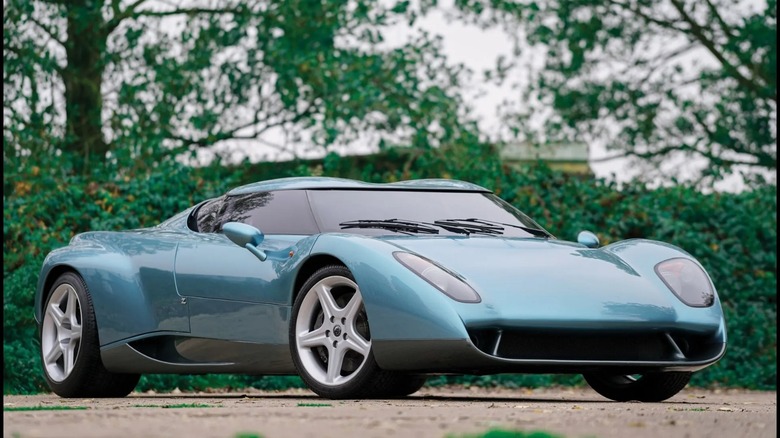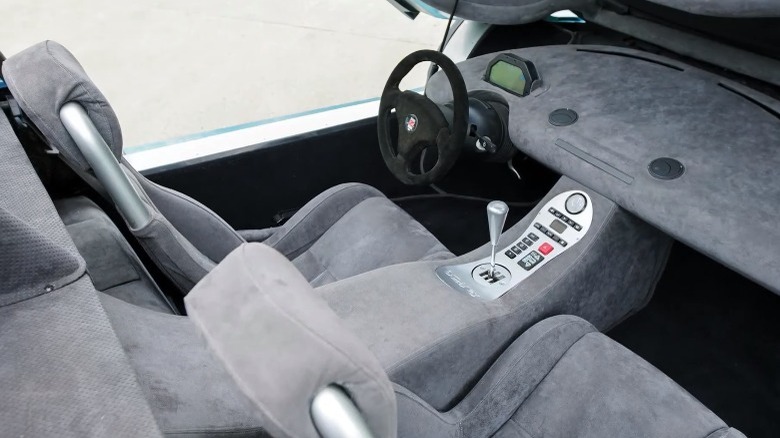The Zagato Raptor Is A Futuristic Lamborghini Concept We Wish Made Production
When it comes to supercars, Lamborghini is one of the most recognizable names in the industry. The Italian firm's marketing hasn't always been as solid, but its wild concept and production cars have certainly inspired many a gearhead's love for going fast. While Lamborghini unveiled the latest bizarre concept car in its roster, the Huracan Sterrato, in June 2019, it's taken three years for it to enter limited production.
Some concept cars have not been as lucky. Whether the vehicle was never intended to enter production, the designs didn't get enough attention, or the cars were simply too expensive to produce en masse, some concept cars simply don't get released, which can be a real shame. Unfortunately, this was the case with the suave Lamborghini Zagato Raptor concept, a collaboration between Lamborghini and the notable Italian studio the car is named for. Zagato is known for its coach-building prowess, having a large portfolio of work including projects with Aston Martin, Bombardier, Maserati, and Bugatti.
A fast, lightweight, speed demon
According to a Sotheby's auction listing for one of the only two units ever made, the Zagato Raptor concept was unveiled at the 1996 Geneva Motor Show and was intended to be a successor to the Lamborghini Diablo, but it never made it to production. The Zagato Raptor largely used the Diablo as a base, making use of the 5.7-liter, V12 engine, and six-speed manual transmission from the Diablo VT, but with an altered chassis and new bodywork. Delivering between 492 and 620 BHP, depending on the equipment — a performance-boosting compressor was to be optional in the production version — and around 383 ft-lbs of torque, the motor propelled the vehicle to 60 mph in under four seconds and reached a top speed north of 200 mph.
Interestingly, the tubular box-section chassis and carbon-fiber body — which represented Lamborghini's first vehicle designed with CAD/CAM technology — reduced the vehicle's weight significantly. It was around 660 lbs lighter than the production Diablo VT and equipped with an AWD system. As a result, Lamborghini testers reported that it was wickedly fast and handled beautifully, despite the lack of ABS and traction control.
The interior of the vehicle, although certainly not stacked with creature comforts, was a minimalist affair clad in grey and black Alcantara, which was only interrupted by an aluminum instrument panel on the transmission tunnel and a protruding LCD dash behind the steering wheel. Not a victim of practicality, the convertible didn't feature opening windows, making air conditioning a necessary concession.

